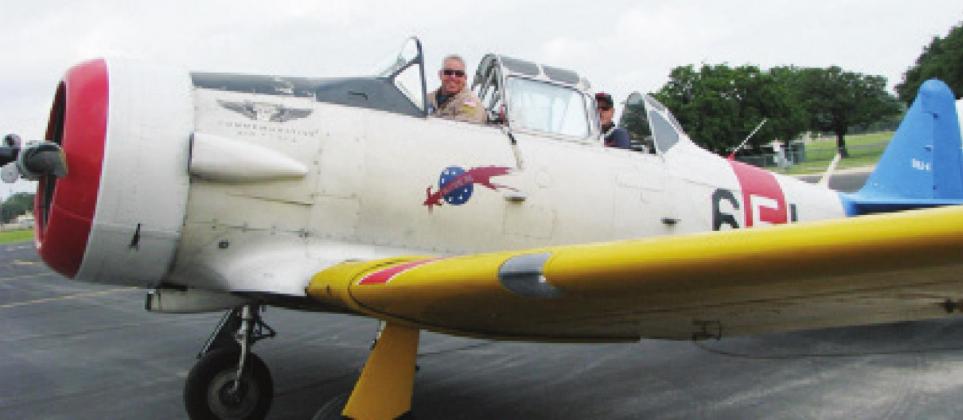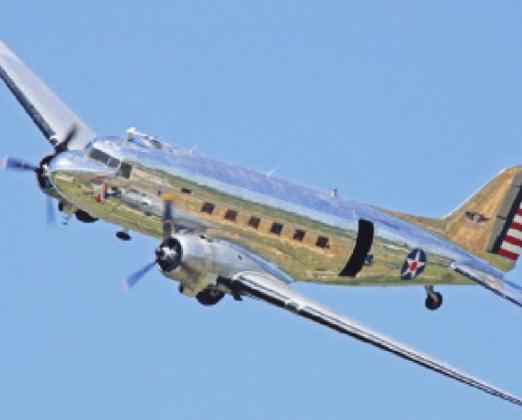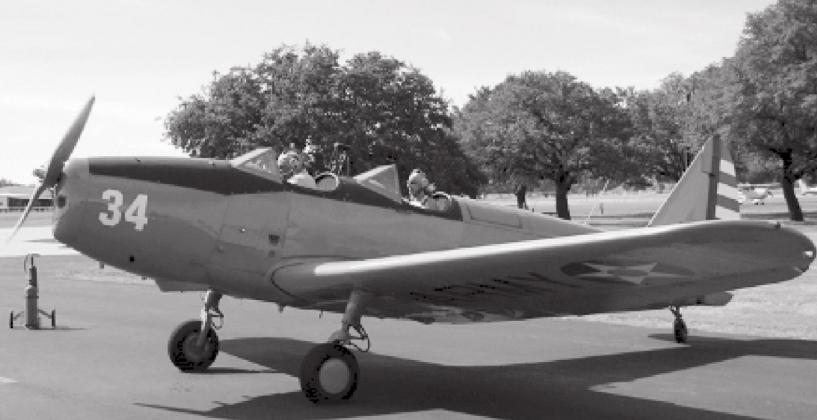The defining moments in our lives are those that forever characterize who we are, and how we respond to them will define who we become in our families, communities and our nation.
One of those defining periods was World War II; a war that brought nations together but also divided countries as people sought to make some sense of the violence, the irrational destruction of entire cities and the wanton loss of life that accompanied this unchecked anger and desire for power. When America entered the war, it would take the commitment of a group of young people, many of whom were barely old enough to be drafted, to come together in unity in an attempt to preserve a way of life that some would not live to enjoy.
The Highland Lakes Squadron of the Commemorative Air Force is an organization of men and women who take seriously the responsibility to keep our history alive through the preservation of the planes from World War II that shaped the people who flew them and helped turn the tide of the war. Even though the CAF members live all across the United States the bulk of them are in Texas, which is where this labor of love began when
U.S. Army Air Force Instructor Pilot Lloyd Nolan and some of his friends, and later Lefty Gardner, decided that these old planes deserved better than the scrap heap and that the pilots who flew them needed to be remembered and honored as the heroes that they were.
The effort became a tribute to keep our history alive and to allow the next generation to enjoy the exhilaration of flying in these remarkable aircraft and learn something of the people who flew them in defense of our nation.
Many of those coming back from the World War II were from the Rio Grande Valley in Texas and because jobs were scarce a lot of them became crop dusters doing what they loved to do and what they knew how to do which was flying. Lloyd Nolan is credited for getting it all started when he discovered that a lot of the old WW II planes were in junkyards.
Lloyd would realize however that buying them was the easy part. According to Sonny Croom, Adjutant at the Highland Lakes Squadron, “the junkyards were selling the planes so cheap that sometimes the gas in the aircraft was worth more than the plane.” The other source for these old planes was the military itself from their reclamation system that had stockpiled the aircraft. However, because of an aluminum shortage after the war, many of the old planes were sold quickly as scrap and sent to the smelters, since there was value in the metal, but some were sold to private individuals.
One of these was the Texas Zephyr, later owned by Karl Ritter who loved to fly and was a big fan of this aircraft affectionally labeled the “gooney bird” because it appeared so cumbersome in its takeoff yet so graceful in the air.
The Zephyr is a C-47, the military version of the Douglas DC-3, the type of aircraft that was used to drop paratroopers on the beach in Normandy on D-Day, June 6, 1944. This celebrated aircraft is scheduled to fly in the 2021 Bluebonnet Air Show that has been rescheduled for March 20th, the time when bluebonnets begin blooming in Burnet County, the “Bluebonnet Capital of Texas.”
The rescue effort however is only a part of the story that people like Lloyd Nolan began. The planes were in desperate need of repair in many cases and they also needed pilots to fly them; pilots who were qualified for the specific aircraft. The love of flying and the desire to keep the history of these amazing machines alive has brought together, at HLS, retired military service pilots, private pilots, commercial pilots including a married couple from New Hampshire and many people who appreciate this history and the sacrifices so many made, to share with the general public the honor and experience of flying in one of these legendary planes though programs facilitated by Wings and Squadrons of the Commemorative Air Force nationwide.
For the pilots who originally flew these machines the training was amazingly short encompassing perhaps only about 200 hours of total flight time. With the war raging the need was overwhelming to get as many in the air as possible.
At this time, it was known as the U. S. Army Air Force (USAAF) which would later separate and become the U.S. Air Force in 1947. Training began in the smaller aircraft with smaller engines and gradually advanced to the bigger and more difficult planes to fly until they eventually moved up to the AT-6 advanced trainer, the most challenging of all. It was said that, “if you can fly an AT-6 you can fly anything.”
It would be difficult to overstate the level of courage and the determination that was embedded into the character of these young pilots as they blazed the path that has led to the development of the greatest Air Force in the history of the world. Most of the men and women from WWII are gone now but thanks to the tireless work of the Commemorative Air Force in our nation, they live on in the legacy that they left behind and the planes that they flew.
Today the Highland Lakes Squadron of the Commemorative Air Force invites you to sample a segment of our history by booking a flight on one of these incredible planes. A favorite is the PT 19 Cornell a two-seater open-cockpit plane that will transport you back in time as you soar through the air with the wind in your face and the added bonus of viewing the majestic hill country below. As an allvolunteer organization the Highland Lakes Squadron is dependent on the community that they serve to help keep the museum doors open and to provide funding to maintain the equipment and to be able to continue to bring in the best entertainment for the annual Bluebonnet Airshow. We live in the greatest nation on earth and our thanks go out to those men and women who are continuing to remind us that there was and still is a cost for the freedoms that we enjoy in America.
Please go to the website for the Highland Lakes Squadron of the Commemorative Air Force, highlandlakessquadron.com/home/museum-history, for additional information, or on Facebook at facebook.com/TheHiglandLakesSquadron/ to learn more about the planes that are available or to help support them financially.
You can also find information about joining the Squadron, if you have an interest in history, planes, or educating younger generations about the spirit of their (great)-grandparents and what they did to preserve our nation.





